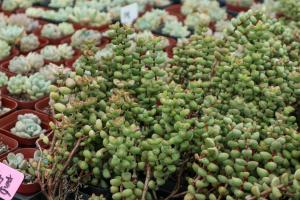How to Plant Runner Beans Seeds in Pots
Runner beans are a popular and versatile vegetable that can be grown in pots, making them perfect for small gardens, balconies, or even indoors. With the right tools and techniques, planting runner bean seeds in pots is easy and rewarding. Follow these steps to grow your own delicious and nutritious runner beans.
Step 1: Choose Your Pot
When selecting a pot for planting runner beans, opt for one that is at least 10 inches deep and wide, with drainage holes at the bottom. Runner beans prefer well-drained soil, so choose a potting mix that is lightweight, fertile, and rich in organic matter.
Step 2: Prepare Your Seeds
Runner beans can be started indoors 4-6 weeks before the last frost, or directly sowed outdoors once the soil has warmed to at least 50°F (10°C). To start seeds indoors, soak them in water overnight to help soften the hard outer coat, then plant them about an inch deep, with the pointy end facing down, in individual pots or a seed tray. Water lightly and keep the soil moist but not waterlogged until the seedlings emerge.
Step 3: Plant Your Seeds
If you are planting runner bean seeds directly into a pot, make sure the soil is well-drained and has been warmed by the sun. Sow the seeds about an inch deep and 4-6 inches apart, then water gently to settle the soil. Cover the seeds with a layer of mulch or compost to help retain moisture and suppress weeds.
Step 4: Provide Adequate Light and Water
Runner beans thrive in a sunny location with at least 6 hours of direct sunlight per day. Water the plants regularly, keeping the soil moist but not waterlogged. Avoid sprinkling the leaves, as this can lead to disease and pest problems. Instead, aim to water the soil around the base of the plants.
Step 5: Support Your Plants
As runner beans grow, they require support to stay upright and produce healthy crops. Install a trellis, bamboo cane, or other support structure in the pot, and tie the plants loosely to it using garden twine or soft plant ties. Avoid tying too tightly, as this can damage the stems.
Step 6: Harvest Your Beans
Runner beans are ready to harvest when the pods are about 6-8 inches long and the beans inside are still small and tender. Carefully snap the pods off the plant by hand, or use a pair of scissors if necessary. Regular harvesting will encourage the plant to produce more beans, and ensure that they remain tender and flavorful.
By following these simple steps, you can enjoy fresh, homegrown runner beans from your pot all season long. Whether you're a seasoned gardener or a beginner, planting runner beans seeds in pots is a satisfying and enjoyable way to connect with nature and reap the rewards of your efforts.

 how many times do yo...
how many times do yo... how many planted tre...
how many planted tre... how many pine trees ...
how many pine trees ... how many pecan trees...
how many pecan trees... how many plants comp...
how many plants comp... how many plants can ...
how many plants can ... how many plants and ...
how many plants and ... how many pepper plan...
how many pepper plan...































